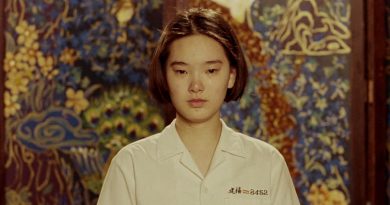On Terrence Malick Badlands: Love and Anti-establishment
In this article, Yus reflects on how Terrence Malick Badlands gives hints of style that will become characteristic of his future works: an inclination towards nature, interest in objects and places that are left behind, and naturalistic cinematography
On the surface, Terrence Malick Badlands appears to be a classic, wanted-lovers-on-the-run film a la Bonnie & Clyde, except the lovers depicted here are much less sure and determined to get away than usual.
25-year-old Kit and 15-year-old Holly, played to poster perfection by Martin Sheen and Sissy Spacek, contemplated suicide at first after Kit reluctantly shot Holly’s father to death for refusing to let them live together. This was before they decided to go on a run and defend their freedom as long as they don’t lay a hand on any lawman (it’s okay to shoot bounty hunters, as they don’t represent justice after all), but even this proves to be quite difficult when one has such a natural talent to kill, though not necessarily the enjoyment in doing so. Add to this complication Holly’s slow-dawning realization that perhaps she ought to have looked for a better boyfriend, with a more secure future, and perhaps consider getting married someday. At her age, she’s supposed to still be in high school after all, and Kit is only her first boyfriend.

What makes this film so special is the confused morality of its characters. Holly and Kit are not sure whether what they did is right or wrong. Well, it’s definitely not right, but maybe it’s okay? Even though society tells them that it is wrong. However, Malick makes sure that there is no time for them to dabble in this confusion. They still have to worry about day-to-day survival; where to sleep for the night, where to get food, and when to bathe. Perhaps this indeterminacy, which gave the characters a sort of mystique, became part of the reason why Malick grew so obsessed with incorporating voiceovers in his later films. However, I think it is this inability to fully tap into the characters’ minds, while still able to relate to how they are feeling, that give the characters, and as an extension, the film, so much of its charm.
What makes this film so special is the confused morality of its characters.
One can argue that Malick’s lead male protagonist has always been the same morally conflicted, anti-establishment type. But I find that there is more depth and authenticity in these characters before Malick became obsessed with voicing out their brooding inner thoughts.

There are still hints of style that will become characteristic of later Malick, such as an inclination towards nature, interest in objects and places that are left behind, and perhaps most noticeably, naturalistic cinematography and ‘accidental moments’ captured on camera that have since become his defining style, an impressive feat of consistency here. Trivia: Badlands has three cinematographers who quit one after another.
Badlands is the most grounded of all of Malick’s films, but it also happens to be one of his most lyrical and inspired, perhaps second only to Days of Heaven. Oh, how I wish Malick would have made more movies like Badlands and Days of Heaven…

Terrence Malick Badlands premiered at the New York Film Festival in 1973. The film is often cited as one of the greatest and most influential films of all time. Streaming available on Apple TV (rent).
Yusgunawan Marto, Jakarta Cinema Club
Yusgunawan is a Director/Cinematographer and senior writer at Jakarta Cinema Club
Also read: On Alexander Dovzhenko’s Earth and the Brink of Communism





Pingback: Secret Movie Saturday: On Western Films - Jakarta Cinema Club
Pingback: Reflection on Edward Yang's A Brighter Summer Day (1991) - Jakarta Cinema Club